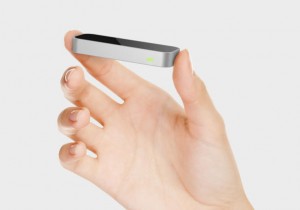There are talks from last 2-3 years on the way we are going to navigate our TVs and computers. Well, it is now coming into reality. Use of conventional navigating devices such as remote controls, touchpads and mouse will eventually go down with the introduction of devices which can detect human gesture and motion. The question was do you need specific gesture for these gadgets to understand? Well, the answer is going to be No. The new gadgets getting introduced can interpret your gesture and motion and will provide the visual feedback. This means that one who knows how to use the device will be able to control it the way he/she wants it to control. This is a genuine requirement since you don’t want to carry the remote control all the time and keep on pressing buttons to navigate. Same goes with PC, where the direction will be always from the controlling devices such as mouse or keyboard.
Microsoft has introduced Kinect in late 2010, which was a Kinect camera and motion control interface for the Xbox 360 console to give its users a true handsfree gaming experience. It enables users to control and interact with the Xbox 360 without the need of touching the game controller. It uses natural user interface using gestures and spoken commands.
There is a new hardware introduced by Leap motion in mid 2012, the Leap. Leap is a small USB device which is similar like the Microsoft Kinect. The major differentiator is that instead of using the mouse or a touchscreen, Leap users will be able to simply move their hands in front of the screen, similar to how gamers interact with Microsoft’s Xbox Kinect system. So not only TV but it will interact with your computer using your motion and facial expressions. This will transform the way we interact with these devices right now.

Microsoft has sold over 10 million units of Kinect over the last 2 years. Leap Motion has started distributing Leap units to its developer community. Microsoft has also unveiled new version of Kinect recently which promised to improve facial recognition and body tracking detection. Leap promises 200 times accuracy over its counterpart Microsoft Kinect. While Kinect was specifically designed for gaming, Leap would definitely be ideal for industries like surgery, gaming, architecture, design, engineering, and more. It would help virtually in signing documents or sketching, gaming, and interacting with complex 3D graphics.
Leap is available for both Mac and Windows and the price would be around $70. The Microsoft Kinect costs around $170.
The motion and gesture control technology will form the headlines in the coming year but it is yet to be seen who will lead the consumer society, will it be Microsoft Kinnect or Leap.